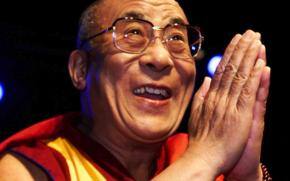What’s the deeper meaning behind Namaste and Charansparsh?

Namaste or Namaskara
The act of joining the palms of the hands in front of oneself is known as Namaskara or Namaste. It is with the Namaskara that people offer prayers to deities and also greet each other throughout India. It conveys reverence, respect, welcome, friendship and hospitality.
The Namaskara is perhaps the most ancient form of formal personal greeting, much older than the handshake. Its antiquity is not easy to gauge, but the Namaskara has been represented even in the earliest of sculptures. The etymology of the words Namaskara and Namaste are relatively easier to deduce. “Namaha” in Sanskrit is “obeisance” and “Te” is “You”. Therefore Namaste is “obeisance to you”.
The palms are among the most expressive parts of the body. They are used to great effect in conveying moods and emotions in Indian classical dance. The various positions of the palms and fingers as they convey emotions and moods are called Hastamudras. Namaskara is among the most commonly used Hastamudras.
The manner of holding the joined palms conveys much. The head bent forward with the tips of the fingers touching the forehead and the eyes shut conveys deep reverence. The palms held slightly lower with the base of the thumbs in line with the solar plexus and the head bent forward ever so slightly conveys both greeting and welcome. Here, the intensity of the accompanying smile adds to the degree of the warmth conveyed.
The joined palms raised way above the head could convey farewell and palms similarly held high with the forearms sticking to each other till the elbows could convey a sigh of relief at the end of an ordeal or a departure of a particularly troublesome guest. The last one, of course, is not performed in front of the other person –it is always behind his or her back! The Uddanda Namaskara is holding the palms farthest from the top of the head while lying flat on the floor face down in front of a deity or god.
In addition to all these variations, each individual adds his or own little personal characteristic to the Namaskara. It may be a wave of the palms, a shake of the head, or a distinct manner of smiling while doing the Namaste.
The most-accepted socio-anthropological explanation for the genesis of the handshake may hold good in the case of the Namaskara too. Baring one’s hands and putting them in front of another individual conveys the fact that the person is unarmed and therefore is a friend and comes in peace.
Charanasparsha
Wisdom, unlike knowledge, comes only with age. This has been recognised since ancient times in Indian culture. It is for this reason that older persons are revered. A younger individual must respect the older one. It does not matter that the older person is poorer in knowledge, economic or social status. The sheer fact that the older person has “seen many more rainy seasons” is enough for a younger person to pay respect to him or her. This is the central sentiment behind the act of Charanasparsha, or touching an elder’s feet.
Those feet have traversed more places, trod through the many landscapes of life. There is no doubt that travel is one of the greatest educators. It takes one through so many environments, situations, and exposes one to so many ideas that it can only add greatly to one’s wisdom. Feet being the basic mode of locomotion, it is rather apt that one pays respects to one’s elders with Charanasparsha.
An elder may touch the feet of a younger person in the event that the younger individual is a spiritually advanced, holy personage. Long after a holy personage has passed away, his or her Paduka or footwear is often worshipped for generations. Almost no other possession is revered as much as the Paduka, which indeed, is the extension of the Charana or feet.
There is a school of thought that sees Charanasparsha as going against the belief that all individuals are equal. The act, therefore, is seen as self-demeaning. But apart from the beautiful spirit behind Charanasparsha and ethics, the very act may be hardwired into our behavioural pattern.
Bending before a higher ranked member of a group is a common mode of paying respect or acknowledging authority in several species of animals, particularly the primates. It is common practice for primates in the lower social order to bend before the acknowledged leader of the group and many times fall on the floor with the haunches raised. The pecking order among hens is a variation on this theme. Going down on one’s knees was also a manner of acknowledging authority for several centuries in the western world. And it is common practice to bend completely before god almighty in the practices of several religions.
Charanasparsha continues to be a practice much in use and is one of the common factors that run through all the religions of India.
Namaste or Namaskara The act of joining the palms of the hands in front of oneself is known as Namaskara or Namaste. It is with the Namaskara that people offer prayers to deities and also greet each other throughout India. It conveys reverence, respect, welcome, friendship and hospitality. The...
Namaste or Namaskara
The act of joining the palms of the hands in front of oneself is known as Namaskara or Namaste. It is with the Namaskara that people offer prayers to deities and also greet each other throughout India. It conveys reverence, respect, welcome, friendship and hospitality.
The Namaskara is perhaps the most ancient form of formal personal greeting, much older than the handshake. Its antiquity is not easy to gauge, but the Namaskara has been represented even in the earliest of sculptures. The etymology of the words Namaskara and Namaste are relatively easier to deduce. “Namaha” in Sanskrit is “obeisance” and “Te” is “You”. Therefore Namaste is “obeisance to you”.
The palms are among the most expressive parts of the body. They are used to great effect in conveying moods and emotions in Indian classical dance. The various positions of the palms and fingers as they convey emotions and moods are called Hastamudras. Namaskara is among the most commonly used Hastamudras.
The manner of holding the joined palms conveys much. The head bent forward with the tips of the fingers touching the forehead and the eyes shut conveys deep reverence. The palms held slightly lower with the base of the thumbs in line with the solar plexus and the head bent forward ever so slightly conveys both greeting and welcome. Here, the intensity of the accompanying smile adds to the degree of the warmth conveyed.
The joined palms raised way above the head could convey farewell and palms similarly held high with the forearms sticking to each other till the elbows could convey a sigh of relief at the end of an ordeal or a departure of a particularly troublesome guest. The last one, of course, is not performed in front of the other person –it is always behind his or her back! The Uddanda Namaskara is holding the palms farthest from the top of the head while lying flat on the floor face down in front of a deity or god.
In addition to all these variations, each individual adds his or own little personal characteristic to the Namaskara. It may be a wave of the palms, a shake of the head, or a distinct manner of smiling while doing the Namaste.
The most-accepted socio-anthropological explanation for the genesis of the handshake may hold good in the case of the Namaskara too. Baring one’s hands and putting them in front of another individual conveys the fact that the person is unarmed and therefore is a friend and comes in peace.
Charanasparsha
Wisdom, unlike knowledge, comes only with age. This has been recognised since ancient times in Indian culture. It is for this reason that older persons are revered. A younger individual must respect the older one. It does not matter that the older person is poorer in knowledge, economic or social status. The sheer fact that the older person has “seen many more rainy seasons” is enough for a younger person to pay respect to him or her. This is the central sentiment behind the act of Charanasparsha, or touching an elder’s feet.
Those feet have traversed more places, trod through the many landscapes of life. There is no doubt that travel is one of the greatest educators. It takes one through so many environments, situations, and exposes one to so many ideas that it can only add greatly to one’s wisdom. Feet being the basic mode of locomotion, it is rather apt that one pays respects to one’s elders with Charanasparsha.
An elder may touch the feet of a younger person in the event that the younger individual is a spiritually advanced, holy personage. Long after a holy personage has passed away, his or her Paduka or footwear is often worshipped for generations. Almost no other possession is revered as much as the Paduka, which indeed, is the extension of the Charana or feet.
There is a school of thought that sees Charanasparsha as going against the belief that all individuals are equal. The act, therefore, is seen as self-demeaning. But apart from the beautiful spirit behind Charanasparsha and ethics, the very act may be hardwired into our behavioural pattern.
Bending before a higher ranked member of a group is a common mode of paying respect or acknowledging authority in several species of animals, particularly the primates. It is common practice for primates in the lower social order to bend before the acknowledged leader of the group and many times fall on the floor with the haunches raised. The pecking order among hens is a variation on this theme. Going down on one’s knees was also a manner of acknowledging authority for several centuries in the western world. And it is common practice to bend completely before god almighty in the practices of several religions.
Charanasparsha continues to be a practice much in use and is one of the common factors that run through all the religions of India.









Leave a Comment